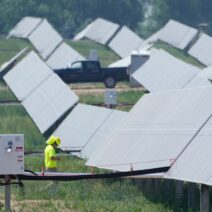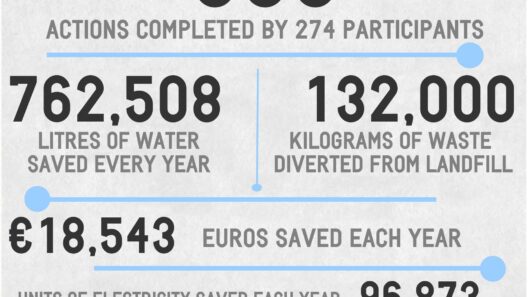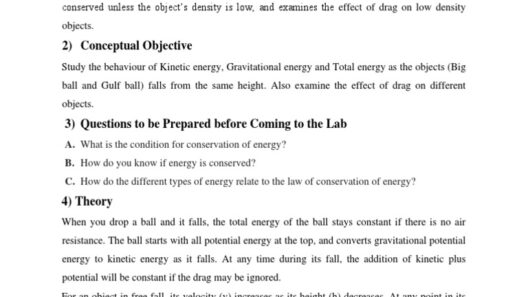Insulation plays a vital role in conserving energy within residential and commercial buildings, minimizing the reliance on heating and cooling systems. Understanding the chemistry behind insulation materials can illuminate how they function to enhance comfort while simultaneously reducing carbon footprints.
The central premise of insulation is rooted in thermal resistance, often referred to as R-value. This metric indicates how effectively a material inhibits heat flow. A higher R-value signifies greater insulation efficacy, allowing homes to maintain stable indoor temperatures while lessening energy consumption.
Insulation materials can be broadly classified into several categories, each possessing unique properties that influence energy conservation. These categories include fiberglass, foam, cellulose, and mineral wool. Each type demonstrates distinct chemical compositions and mechanisms, impacting their thermal performance and environmental footprint.
Fiberglass insulation, one of the most ubiquitous options, consists of fine glass fibers that form a mat or batt. The chemistry of fiberglass lends it remarkable properties that resist both heat transfer and combustion, making it a favored choice for attics and walls. The encapsulation of air within the glass fibers contributes to its insulating power. Air is a poor conductor of heat; thus, the trapped air pockets significantly reduce thermal conductivity. Additionally, fiberglass is non-combustible and does not emit harmful fumes, enhancing safety in residential spaces.
Next, foam insulation—either made from polyurethane or polystyrene—offers an advanced solution characterized by its low density and excellent thermal performance. Polyurethane foam, in particular, boasts a remarkable R-value, resulting from its high cellular structure that effectively traps air and inhibits heat transfer. This insulation can be applied as spray foam, allowing for seamless coverage even in irregular spaces. The manufacturing process of foam insulation involves isocyanates and polyols, which undergo exothermic reactions resulting in expanded foam. This expansion fills cavities, addressing thermal bridging and creating a continuous barrier against heat loss. Furthermore, foam insulation often provides an air barrier, further enhancing energy efficiency by reducing air leakage.
Cellulose insulation, derived from recycled paper products, presents an eco-friendly alternative in the insulation spectrum. The chemical composition of cellulose includes natural fibers treated with fire-retardant materials to enhance safety. Cellulose’s significance lies in its ability to effectively absorb and release moisture, thus regulating humidity levels within a building. This hygroscopic nature, combined with its superior ability to reduce air infiltration, makes cellulose a sustainable choice for energy conservation. By filling voids and gaps in construction, cellulose minimizes thermal bridging, thereby optimizing energy efficiency.
Mineral wool, or rock wool, is produced from basalt rock and recycled materials. It exhibits excellent sound absorption properties in addition to its thermal insulation capabilities. The fibrous structure presents a significant advantage in resisting heat flow while providing fire resistance. Mineral wool’s hydrophobic characteristics enable it to avoid moisture accumulation, thereby curtailing the risk of mold development. The interplay between its chemical composition and structural configuration makes mineral wool a versatile insulation option for various climates and building types.
Beyond the materials, the performance of insulation is intricately linked to installation practices. The effectiveness of insulation diminishes if improperly installed. Gaps, compressions, and thermal bridging must be meticulously addressed to achieve optimal results. Furthermore, the configuration of a building will influence insulation strategy. For instance, attics require distinct considerations compared to crawl spaces and walls. Understanding the chemistry and physics of heat flow will equip homeowners and builders to make informed decisions regarding insulation placement and types.
Incorporating insulation is more than a measure for comfort—it is a calculated strategy in addressing climate change. Buildings account for a substantial proportion of energy-related emissions. Enhanced insulation directly correlates with reduced energy consumption, less reliance on fossil fuels, and a decrease in greenhouse gas emissions. This consideration is critical as society moves toward sustainability, necessitating innovative approaches to retrofitting existing structures and designing new ones.
The broader implications of insulation also extend into economic realms. Homeowners experience reduced energy bills in both the short and long term due to improved energy efficiency. Additionally, energy-efficient homes often yield higher property values and greater market demand. This economic advantage reinforces the importance of prioritizing insulation in building design and renovation projects.
In summary, the dual focus of insulation on chemistry and comfort is instrumental in conserving energy and promoting sustainable living. The variety of insulation materials available, each with unique chemical properties, provides myriad options for energy conservation strategies. Recognizing the significance of effective installation and the holistic integration of insulation within the building envelope will drive the movement towards energy-efficient homes. Through collective action in employing adequate insulation, societal strides can be made in the battle against climate change, creating a sustainable future for generations to come.








